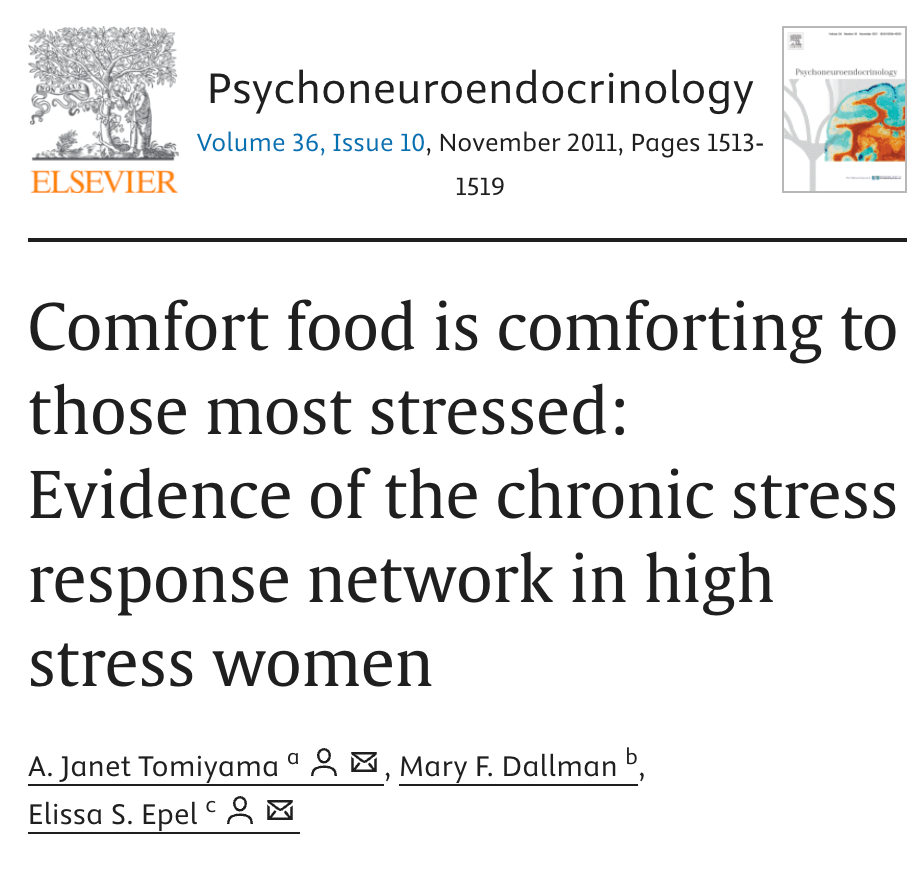Mary Dallman, PhD, a professor of physiology at UCSF, discovered that "comfort eating" is validated by science.
Truly, we all have discovered the truth that food comforts us. Hunger is stressful, and eating food responds to that problem by quieting that stress. I'm not talking about eating for hunger but eating to self-medicate. A little self-medication never hurt anybody, and when my husband Walt is away at a meeting or with his buddies for dinner, I do enjoy digging into a delectable "Chinese Chicken Salad" from a local eatery, which happens to be named "Comforts." Worse, by the standards of the food police, I like coupling it with some trashy television. Life is to be enjoyed!
Yet, with 74 percent of Americans overweight or obese, maybe it's time for a fresh look at comfort through the lens of neurophysiology.
Redefining Comfort
Before we knew that anyone six years old or above could use their brain's resilience pathways to get to Brain State 1 with joy (EBT was discovered in 2007), we had to settle for the "Mediocre Middle" brain states.
They are Brain States 2 to 4, each with compromised biochemistry, emotions, thoughts, behaviors, productivity, spiritual connection, and health. Yet that is the norm in America. Principally, we are in the habit of, and societally reinforced for, being numb, addicted, zoned out, anxious, depressed, or irritable. Giving ourselves an external source of comfort chemicals through food only seems sensible.

Am I at One? If not, activate a 5 Circuit and rewire it
When we live in the Mediocre Middle brain states, we settle. They feel uninspired, disconnected, and rather unrewarding, so we don't expect much of life. Bumping our physiologic brain state up from a 4 to a 3 or 2 with some chips or a cookie or two sounds quite sensible.
The problem is that when we do that, we bypass rewiring our brain to be in Brain State 1. That wire that activates the stress chemical and inflammation cascade smiles and says, "No worry!" It's pleased because it can return to its daily task of spontaneous activation and, according to the rules of neuroplasticity, become more dominant and more apt to activate a comfort eating attack.
The New Comfort: Be Emotionally Radical
Since the discovery of EBT, all that comfort eating looks like dysfunction – not a "pathology," just a bit behind the times.
Neuroscience gives us the EBT 5-Point System, so we are always just a few clicks on our app away from deactivating the stress response, activating reward chemicals, and nourishing our real hunger: to be at Brain State 1.
At EBT, we propose that each of us become radicalized emotionally. We don't put up with the Mediocre Middle States that invite us to find all the temptations of modern life exceedingly appealing. They are so alluring because, in those mediocre states, we are joy insufficient. The chemicals of spiritual connection, falling in love with nature, and spinning out of control with our realization that we are A-L-I-V-E vanish.
What's sensible, even though it may appear unlikely, until you try living that way? Demand of yourself that you make Brain State 1 your norm. Why wouldn't you? With EBT it is perfectly attainable. Sure, we can settle into a protracted Brain State 2, which is still homeostatic, not the dreaded allostasis of Brain States 3, 4, and 5 with their biochemical toxicity. However, if our set point is joy, even Brain State 2 has a biochemical backfield of endorphins and dopamine that almost qualifies it as a 1.5.
Boosting Our Emotional Wealth as a Daily Practice
Yet the policy we set is to be One-ish and, if not, throw a bit of a fit. It's a neuroscientific fit, and it only takes a minute or two. That strategy involves using EBT whenever we notice that we are not One-ish, doing our very best to activate a 5 Circuit, and then crushing it soundly. Demolishing it!
Out goes our emotional poverty, as we are out of the Mediocre Middle. That comfort food . . . well, we know we can always have it, as deprivation blocks joy . . . but the food looks like food, an object, and our dopamine and endorphins are flowing freely from Brain State 1. Eating comfort foods seems rather . . . uncomfortable.
We'd rather hang out at Brain State 1 and get those delicious chemicals anytime, anywhere, and satisfy our deeper needs to connect with nature, collect more moments of purpose, and get on with living naturally and . . . exceedingly well.

